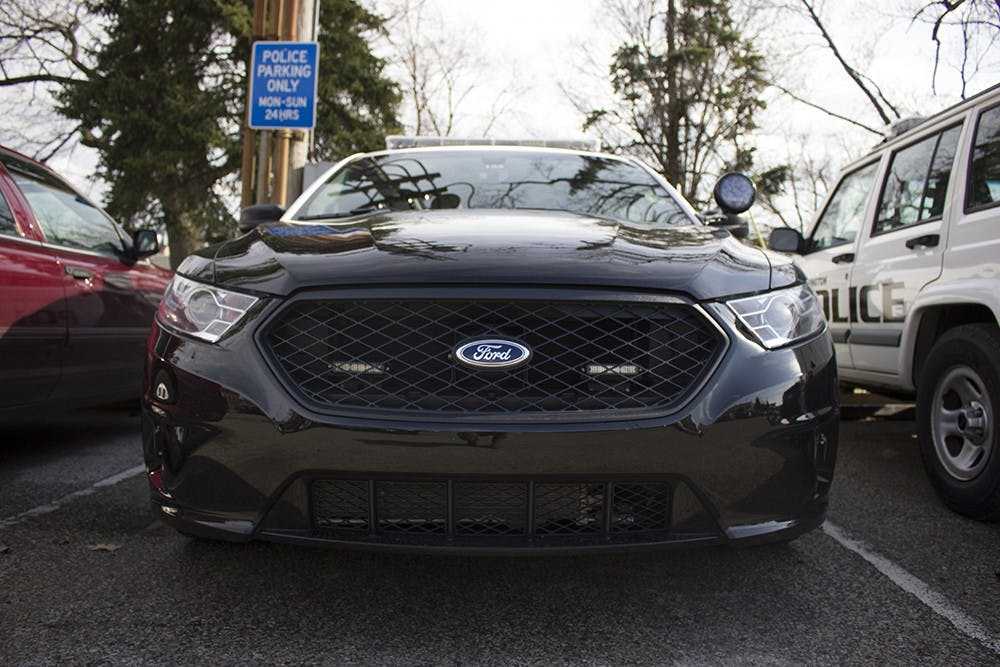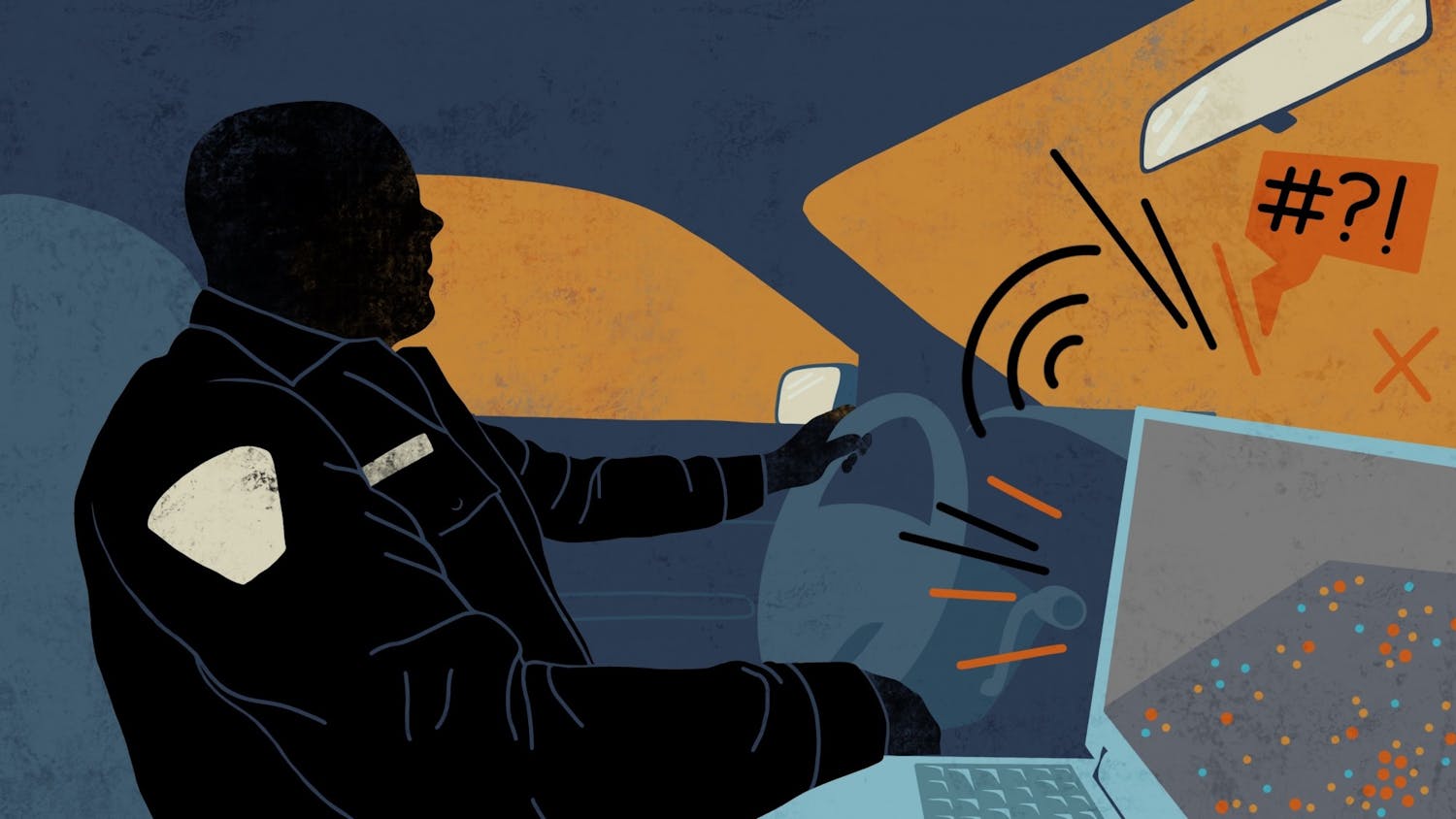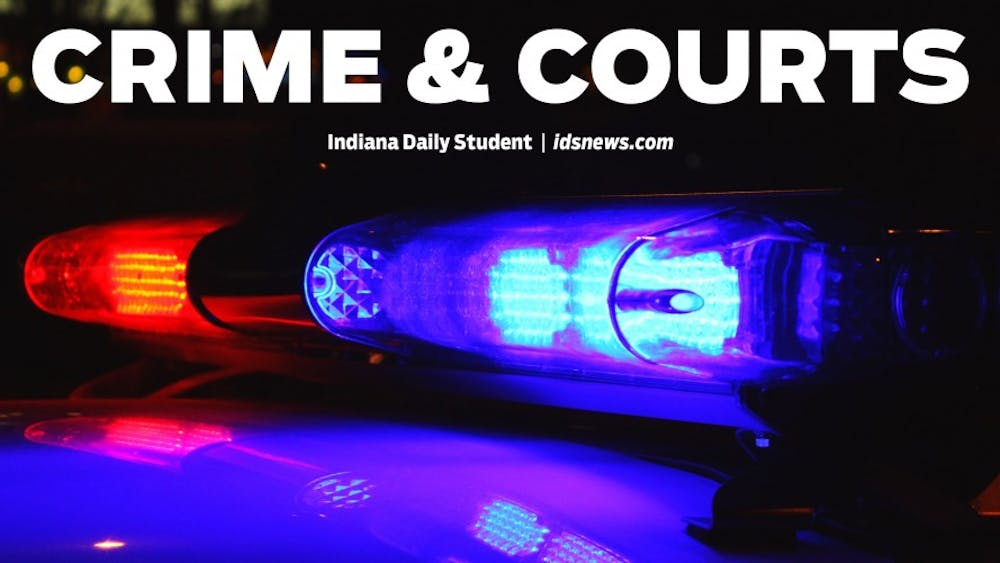Equipped with a radio, his vehicle was essentially no different from the rest of the Dodge Diplomats in production at the time, or most cars on the road, for that matter.
“The (police) cars really weren’t that much more superior than what the general public had,” he said before spending three minutes listing off modern technological advances in patrol cars.
Resources inside Bloomington Police Department patrol cars include mobile data terminals, radars, ID scanners that highlight wanted individuals and stolen vehicles, printers, a mapping system that locates every BPD vehicle in the area and 800 MHz radios.
“I never in my wildest dreams thought that we would have all the technology that we have in the cars right now,” Pope said.
In fact, there’s almost too much technology inside the vehicles for their own good.
“Literally there’s so much technology in these cars,” he said as he looked out the window of his office at the patrol cars in the BPD’s parking lot, “that we had to tint our windows.”
The vehicles are equipped with so much computerized technology they were overheating in the summer, and the BPD was having difficulty keeping the cars cool enough to keep the equipment operational. Hence the tinted windows.
Pope has given thought to future in-car enhancements. At the top of his wish list is facial and license plate recognition technology. He’s aware of preliminary recognition technology and said he’s hopeful the next generation of officers will have it at their disposal.
“They’ll be driving down the road, and someone’s wanted, and as your car’s driving down the road, it tags a facial recognition and goes, ‘Hey, this guy is wanted for murder,’” he said. “Who knows if that’ll happen, but our technology is increasing at such a rapid pace right now that it’s not out of the question.”
***
In total, the BPD has a fleet of 54 vehicles ranging from marked patrol cars to evidence vans to Critical Incident Response Team vans to a Rhino ATV.
A fleet maintenance department at the BPD has a color coding system — ranging from “great condition” to “critical” — to define the status of individual vehicles. The classifications take into account vehicle reliability, miles driven and hours of use. Every vehicle has an hours meter because running idle can be just as hard on a vehicle as driving, ?Pope said.
“Overall, all of our police vehicles have to be acceptable for a pursuit-rated vehicle, an emergency response type vehicle,” he said. “Once it degrades to the point where it’s no longer acceptable for a emergency response vehicle, it’s time to replace it.”
The BPD’s fleet ?maintenance department works in tandem with the City of Bloomington to replace vehicles that reach “critical.” When a vehicle’s career is finished with the BPD, it is phased into becoming a training vehicle.
The city estimates how many vehicles it will have to replace — across all of its departments, not just the BPD — on an annual basis and then allots an appropriate amount of money from its general fund to purchase new vehicles.
The number of police vehicles needing to be replaced varies from year to year. Sometimes it’s 12, sometimes it’s as few as four, but it all depends on the condition of the fleet.
Using a state bid system, the BPD generally buys vehicles at a lower cost than what the general public pays for its cars, Pope said.
By the time the average patrol car is transferred to Bloomington and equipped with the proper technology, the bill runs somewhere in the high $20,000s, “which is actually pretty good when you look at what you get for that,” Pope said.
Lifespans of the BPD’s marked cars are typically three years. A three-year lifespan is dwarfed in comparison to most cars. But most cars aren’t driven 24/7.
Officers’ shifts end, but the vehicles’ shifts don’t.
“They’re literally running all the time,” Pope said. “Year-round. Literally year-round.”
***
There’s a common misconception that police officers drive the fastest cars on the road, Pope said.
Though the BPD’s cars are probably a little faster than the average vehicle because of the makes and models its officers drive, they’re not necessarily the fastest.
“What makes the car more superior in a pursuit setting is that officer driving the car,” Pope said.
BPD officers have years of training, radio communication, game plans and tactics that make them the most effective drivers on the streets of Bloomington.
“That’s the factor that makes them superior is just not the car, it’s the driver,” Pope said.
The training process begins at police academies, where future officers go through extensive in-class and hands-on learning.
On an EVO track, cadets learn how to corner vehicles, control and pull out of a skid and maintain a safe distance from the vehicle in front of them during pursuit, Pope said.
And that behind-the-wheel training doesn’t stop at the academies.
Officers are mandated by the state to retrain in EVO training on an annual basis.
“It’s a continual training process,” Pope said.
Too often, Pope said, people see an object when they see a police car, not the person driving it.
“I’d like them not only to see the authority figure that’s driving but understand there’s a human being in the car,” he said. “’Cause you kind of get looked at like you’re an object, not a human, you know, and that’d be nice to see that change.”





